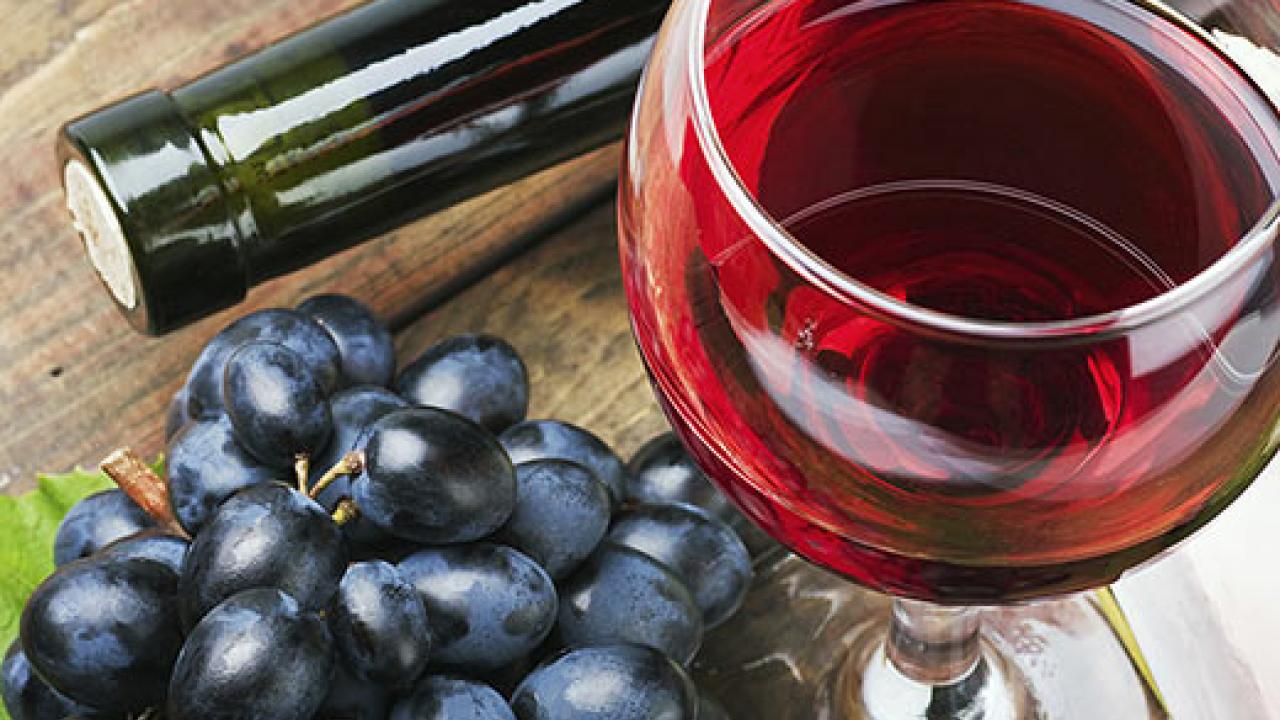A chronic problem in winemaking is “stuck fermentation,” when yeast that should be busily converting grape sugar into alcohol and carbon dioxide prematurely shuts down, leaving the remaining sugar to instead be consumed by bacteria that can spoil the wine.
A team of researchers including UC Davis yeast geneticist Linda Bisson has discovered a biochemical communication system behind this problem. Working through a prion -- an abnormally shaped protein that can reproduce itself -- the system enables bacteria in fermenting wine to switch yeast from sugar to other food sources without altering the yeast’s DNA.
“The discovery of this process really gives us a clue to how stuck fermentations can be avoided,” said Bisson, a professor in the Department of Viticulture and Enology. “Our goal now is to find yeast strains that essentially ignore the signal initiated by the bacteria and do not form the prion, but instead power on through the fermentation.”
She suggests that the discovery of this biochemical mechanism, reported Aug. 28 in the journal Cell, may also have implications for better understanding metabolic diseases, such as Type 2 diabetes, in humans.
Bacteria, yeast and fermentation
Biologists have known for years that an ancient biological circuit, based in the membranes of yeast cells, blocks yeast from using other carbon sources when the sugar glucose is present.
This circuit, known as “glucose repression,” is especially strong in the yeast species Saccharomyces cerevisiae, enabling people to use that yeast for practical fermentation processes in winemaking, brewing and bread making, because it causes such efficient processing of sugar.
Prions play key role
In this study, the researchers found that the glucose repression circuit is sometimes interrupted when bacteria jump-start the replication of the prions in membranes of yeast cells. The interference of the prions causes the yeast to process carbon sources other than glucose and become less effective in metabolizing sugar, dramatically slowing down the fermentation until it, in effect, becomes “stuck.”
“This type of prion-based inheritance is useful to organisms when they need to adapt to environmental conditions but not necessarily permanently,” Bisson said. “In this case, the heritable changes triggered by the prions enable the yeast to also change back to their initial mode of operation if environmental conditions should change again.”
The researchers demonstrated in this study that the process leading to a stuck fermentation benefits both the bacteria and the yeast. As sugar metabolism slows down, conditions in the fermenting wine become more conducive to bacterial growth, and the yeast benefit by gaining the ability to metabolize not only glucose but also other carbon sources as well -- maintaining and extending their lifespan.
Solutions for winemakers
Now that this communication mechanism between the bacteria and yeast is more clearly understood, winemakers should be better able to avoid stuck fermentations.
“Winemakers may want to alter the levels of sulfur dioxide used when pressing or crushing the grapes, in order to knock out bacteria that can trigger the processes that we now know can lead to a stuck fermentation,” Bisson said. “They also can be careful about blending grapes from vineyards known to have certain bacterial strains or they could add yeast strains that have the ability to overpower these vineyard bacteria.”
Other researchers on this study were Susan Lindquist, Daniel F. Jarosz, Jessica C.S. Brown, Alex K. Lancaster, Amelia Chang and Gregory A. Newby, all from the Whitehead Institute for Biomedical Research in Cambridge, Massachusetts; Gordon A. Walker of UC Davis; Manoshi S. Datta of the Massachusetts Institute of Technology; and W. Lloyd Ung, Assaf Rotem and David A. Weitz, all of Harvard University.
Funding for the study was provided by the G. Harold and Leila Y. Mathers Foundation, Howard Hughes Medical Institute, and the National Institutes of Health.
UC Davis is growing California
At UC Davis, we and our partners are nourishing our state with food, economic activity and better health, playing a key part in the state’s role as the top national agricultural producer for more than 50 years. UC Davis is participating in UC’s Global Food Initiative launched by UC President Janet Napolitano, harnessing the collective power of UC to help feed the world and steer it on the path to sustainability.
Media Resources
Pat Bailey, Research news (emphasis: agricultural and nutritional sciences, and veterinary medicine), 530-219-9640, pjbailey@ucdavis.edu
Linda Bisson, Viticulture and Enology, (530) 752-3835, lfbisson@ucdavis.edu
